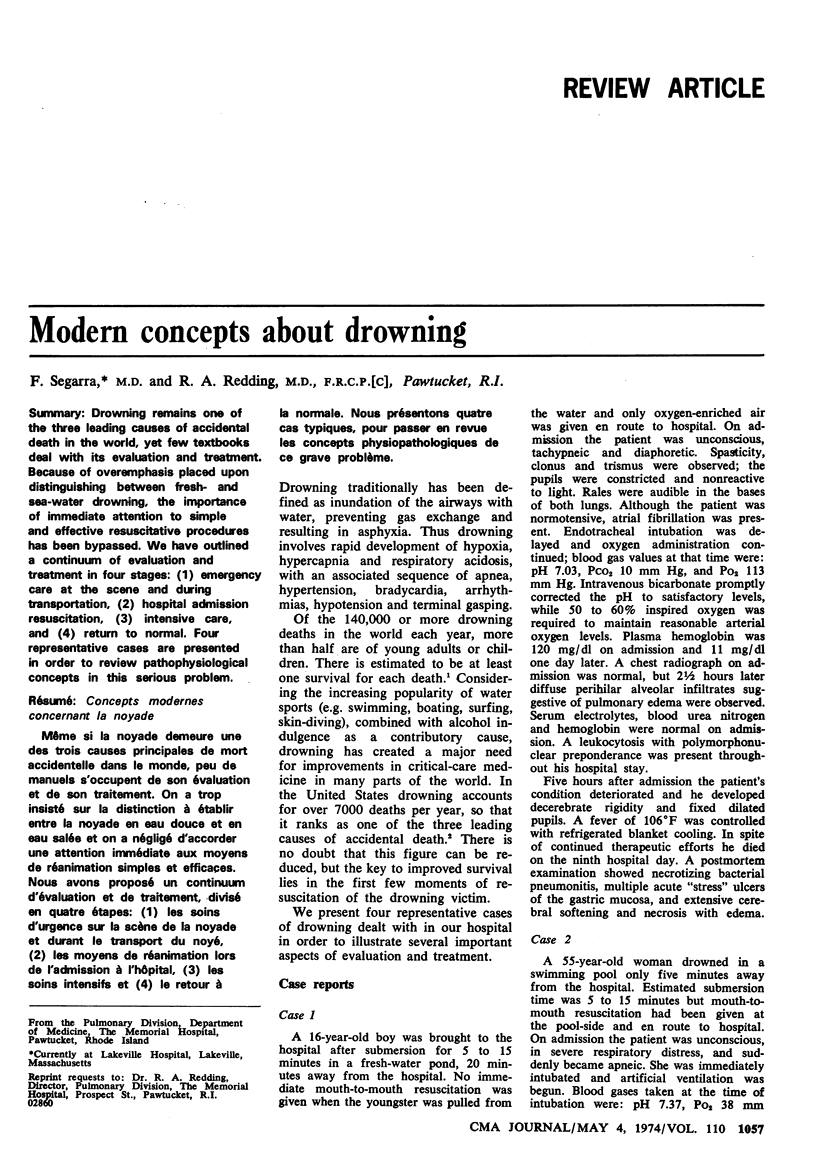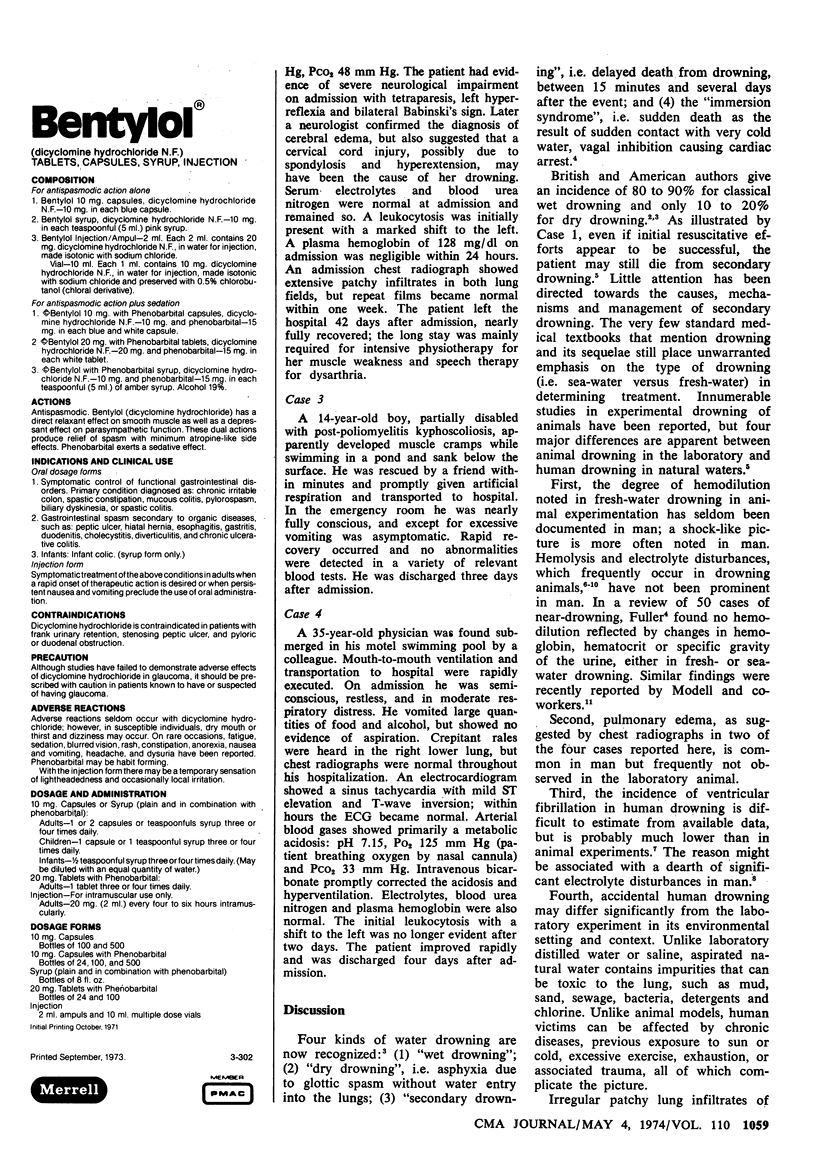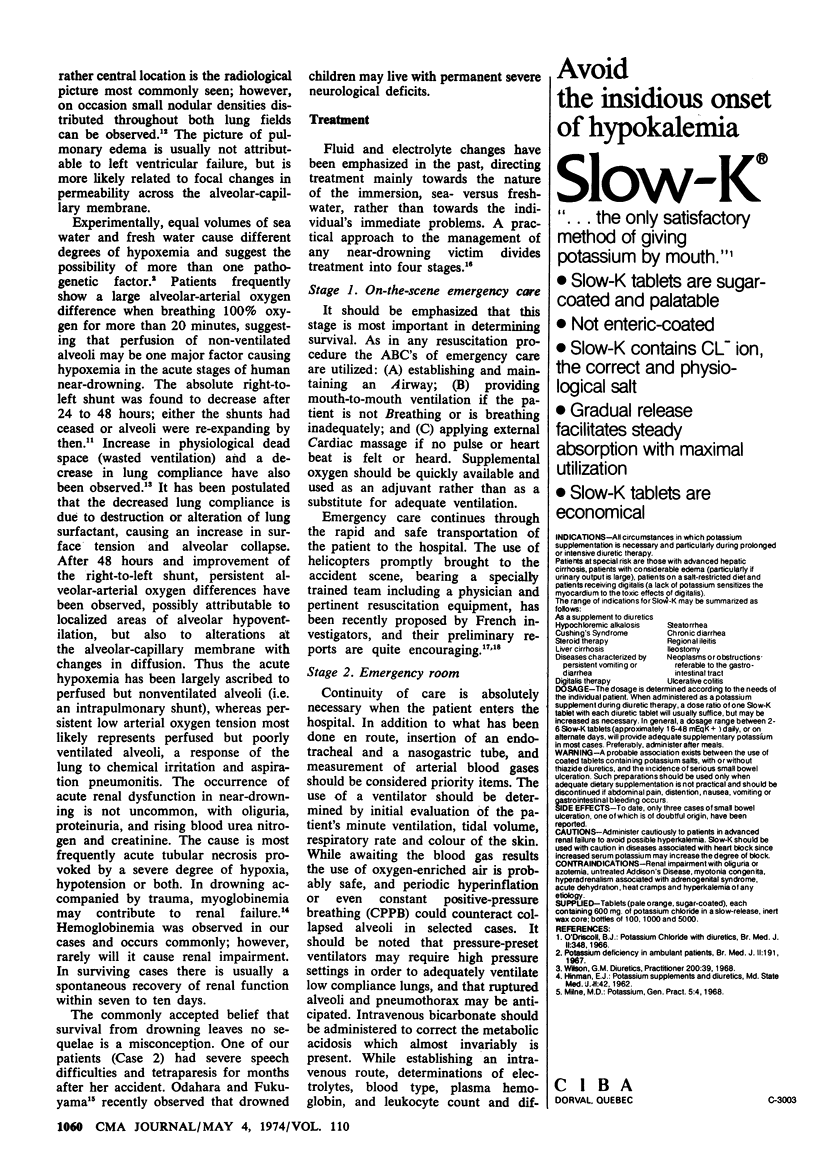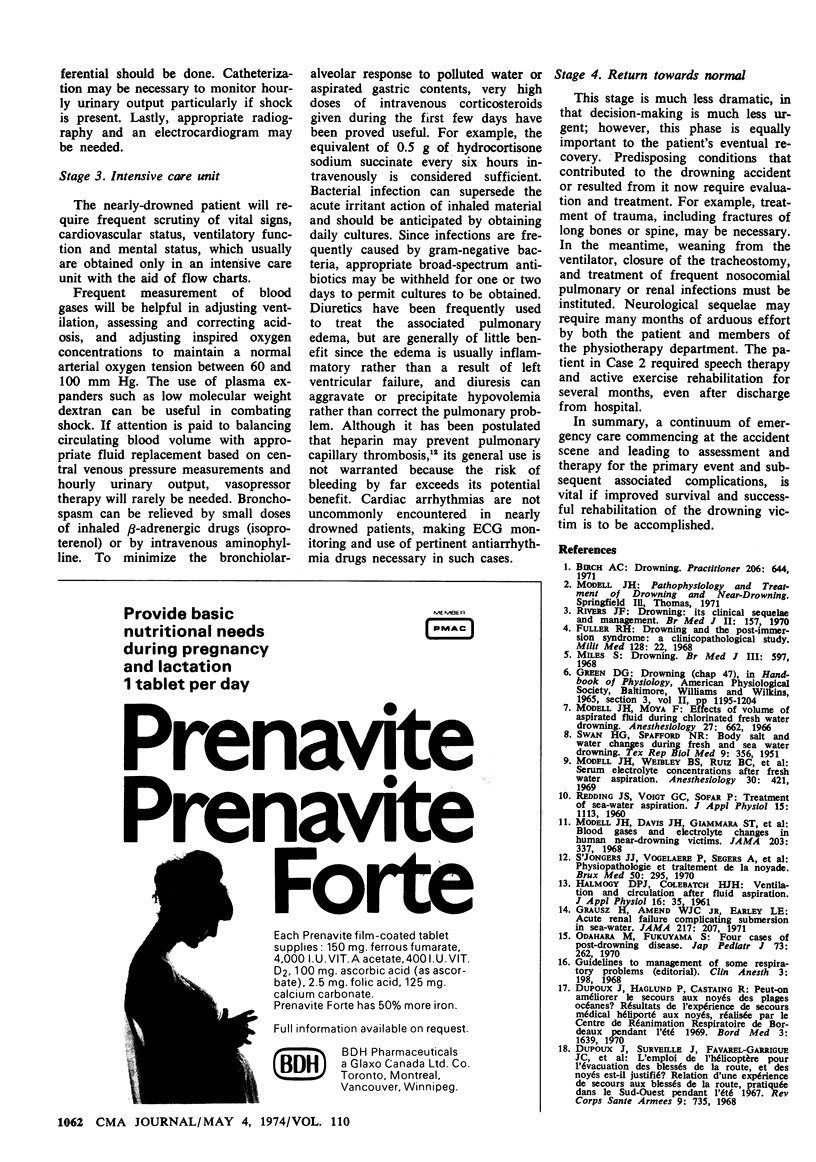Abstract
Drowning remains one of the three leading causes of accidental death in the world, yet few textbooks deal with its evaluation and treatment. Because of overemphasis placed upon distinguishing between fresh- and sea-water drowning, the importance of immediate attention to simple and effective resuscitative procedures has been bypassed. We have outlined a continuum of evaluation and treatment in four stages: (1) emergency care at the scene and during transportation, (2) hospital admission resuscitation, (3) intensive care, and (4) return to normal. Four representative cases are presented in order to review pathophysiological concepts in this serious problem.
Full text
PDF



Selected References
These references are in PubMed. This may not be the complete list of references from this article.
- Birch C. A. Drowning. Practitioner. 1971 May;206(235):644–648. [PubMed] [Google Scholar]
- Dupoux J., Haglund P., Castaing R. Peut-on améliorer le secours aux noyés des plages océanes? Résultats de l'expérience de secours médical héliportê aux noyés, réalisée par le Centre de Réanimation Respiratoire de Bordeaux, pendant l'été 1969. Bord Med. 1970 Jun;3(6):1639–1670. [PubMed] [Google Scholar]
- Dupoux J., Surveille J., Favarel-Garrigue J. C., Cardinaud J. P. L'emploi de l'hélicoptère pour l'évacuation des blessés de la route et des noyés est-il justifié? Relation d'une expérience de secours aux blessés de la route, pratiquée dans le Sud-Ouest pendant l'été 1967. Rev Corps Sante Armees Terre Mer Air. 1968 Dec;9(6):735–754. [PubMed] [Google Scholar]
- FULLER R. H. The 1962 Wellcome prize essay. Drowning and the postimmersion syndrome. A clinicopathologic study. Mil Med. 1963 Jan;128:22–36. [PubMed] [Google Scholar]
- Grausz H., Amend W. J., Jr, Earley L. E. Acute renal failure complicating submersion in sea water. JAMA. 1971 Jul 12;217(2):207–209. [PubMed] [Google Scholar]
- Miles S. Drowning. Br Med J. 1968 Sep 7;3(5618):597–600. doi: 10.1136/bmj.3.5618.597. [DOI] [PMC free article] [PubMed] [Google Scholar]
- Modell JH WEIBLEY T. C., Ruiz B. C., Newby E. J. Serum electrolyte concentrations after fresh-water aspiration. A comparison of species. Anesthesiology. 1969 Apr;30(4):421–425. doi: 10.1097/00000542-196904000-00012. [DOI] [PubMed] [Google Scholar]
- Modell J. H., Moya F. Effects of volume of aspirated fluid during chlorinated fresh water drowning. Anesthesiology. 1966 Sep-Oct;27(5):662–672. doi: 10.1097/00000542-196609000-00018. [DOI] [PubMed] [Google Scholar]
- S'Jongers J. J., Vogelaere P., Segers A., Segers M. Physiopathologie et traitement de la noyade. Brux Med. 1970 Apr;50(4):295–302. [PubMed] [Google Scholar]
- SWANN H. G., SPAFFORD N. R. Body salt and water changes during fresh and sea water drowning. Tex Rep Biol Med. 1951;9(2):356–382. [PubMed] [Google Scholar]


